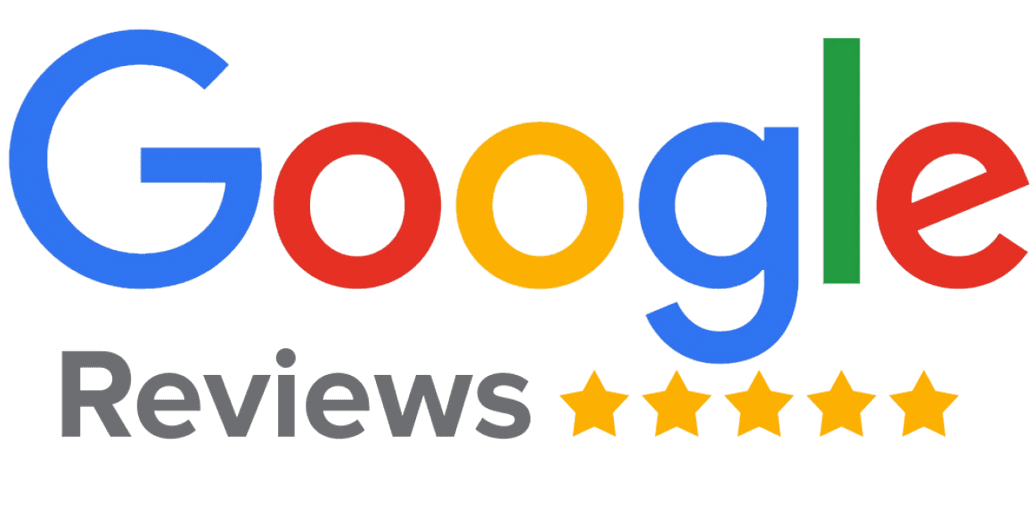How To Promote Your Marketing Blog
The initial phase of starting your blog should be one of the most fun and exciting parts of your journey. These days, there’s plenty of amazing content to be shared online.
Ultimately, it takes more than an online presence and compelling content to be successful with blogging. You have surely come a long way, pouring all that time and effort into the process of ideation, researching your target market, and narrowing in on your niche, but this is where your efforts finally begin to pay off.
However, for your blog to be successful from the get-go, there are several things that you must do. First, you have to lay the groundwork for success by promoting your blog. That’s right, and there’s research involved in this stage, too.
If you don’t have the traffic coming in, all of your efforts would be a waste of time. You don’t want things to fall apart during execution just because you don’t have a good promoting action plan. It is something worth investing time and resources in. In a Survey conducted by Orbitmedia, all bloggers surveyed spend an average of 2 hours promoting their articles.
Let’s walk you through a simple but thorough blog promotion checklist.
Share Your Blog On Social Media

Got a really great new post you want to spread as far as possible? Sharing your content on social media is an excellent way to get more visibility, and ultimately increase traffic and shares. According to Oberlo, 97% of bloggers use social media to promote their blog posts.
However, promoting your marketing blog on social media is not just a case of posting once on Facebook and then moving on to something else. You need to have a powerful social media marketing strategy in place. A good strategy should include:
- Focusing on the most relevant social networks for your blog.
- Engaging with people on those platforms, including influencers and brands.
- Participating in social groups to grow your social media reach.
To cultivate a strong social media presence, ensure that you aren’t posting swipe-up links to your content daily. Instead, try creating a diverse social media content calendar with a variety of engaging posts, and post 3-4 a month to drive traffic to a new or relevant blog post.
Building Relationships
No matter how good your marketing blog content is, you don’t want the people that you connect with on a professional, or personal, level to feel like you’re just using them as a tool to spread your content.
Every step you take in promoting your blog posts will be far more effective if you take the time to build better relationships through direct engagement and contributing relevantly to conversations.
However, don’t try to game your network for links and shares. Real two-way relationships with other brand marketers are far more effective, require less work, and will provide better results as your blog grows.
Remember, you never have to force it. An easy way to leverage real relationships for blog promotion is to build off-site relationships with other bloggers and businesses. Remember to share other people’s content on social media, in your emails, and through links in your blog content. By building these relationships, you never know who will share your content in exchange.
Guest Post On Popular Blogs
Guest Blogging is still one of the most effective paths to follow when trying to promote your blog.
The key to making guest blogs work is writing the best content that you have on relevant blogs in your niche. Usually, guest blogs are more effective when written on relevant blogs in your niche that have a high volume of followers and subscribers.
This is an excellent way to promote your blog. In a Blogging research, Optinmonster discovered that 79% of editors find guest content too promotional.
Guest blogging gets you and your brand content exposed to the other bloggers’ loyal audiences. Do you want to establish yourself as an authority figure and connect with other thought leaders in a niche? If yes, then Guest blogging is the way to go.
When you guest blog, always include a link in your author bio to a landing page on your site where visitors can get an exclusive download or find more about your services.
Email Marketing
It might be ageing, but email is far from obsolete. Think about it: every account you sign up for typically requires an email address.
It takes a simple process. Placing email opt-ins on your blog and on social media will help you gather email addresses. Consider providing a great freebie or regular tips exclusively for subscribers to increase conversion.
You can use the subscriber list that you obtain to let your fans know immediately you upload new content, revisit old content in relation to trending topics, and encourage them to share the content with their networks.
With a strong call to action and undivided attention, you’ll be amazed at how willing your subscribers are to promote you. In fact, email generates an astounding 4,200% ROI, according to Litmus. It remains among the most powerful and cost-effective promotion strategies despite all the latest marketing fads.
Link Building
You must have heard this a lot of times already, but if you really want to rank on Google, then link-building is something you want to invest in. Once you know the ins and outs of your content, you can start to build organic links to your website.
Building links to your site is one of the best ways to ensure you’re cultivating a good, long-term SEO and promoting strategy for your blog. If you have no idea how to build backlinks, Clickslice has you covered. We offer bespoke link building services that will go a long way in promoting your blog content and creating awareness for your brand across the digital space.
Additionally, Search Engines look at how many links lead back to your site when deciding how to rank your website. Of course, there are different ways to build backlinks to your sites. Neil Patel recognizes that infographics still work today and can play a vital role in your link building strategy. In Fact, according to Hubspot, blog articles that include infographics generate an average of 178% more inbound links and 72% more views than all other posts.
These statistics make creating infographics a link building tactic that you can’t afford to ignore if you want to promote your brand’s marketing blog content.
How To Improve Your Marketing ROI
When you launch a marketing campaign, you want to ensure it’s as successful as possible. Whether your goal is to increase sales, attract new customers or build brand awareness, you need the right strategies to maximise your return on investment (ROI).
Marketing campaigns are often expensive, but they are necessary. You can’t unleash the full potential of your campaigns without a powerful marketing strategy.
Regardless of the mode of marketing, you need to determine your marketing campaigns’ Return On Investment (ROI). Measuring return on investment is essential for every well-thought-out marketing strategy, although calculating it may initially seem unclear. However, there are a variety of metrics that you can track when it comes to measuring the ROI of your digital marketing campaigns. Thus, knowing which ones to measure and avoid is also necessary.
Here are the most innovative ways to improve the return on the resources you invest in your marketing activities.
Establish Campaign Goals

Every business has goals, and so does every marketing campaign. When you create business goals, you must consider multiple factors that could impact your journey to achieving your goal.
Most organisations have recently begun to embrace “SMART” goals (Specific, Measurable, Achievable, Relevant and Time-bound). According to Managers.UK, SMART is a strategy that helps you plan your approach to reach the goals and measure your progress easily.
For starters, you need to determine what a strong ROI would be from your campaigns. Remember that your marketing ROI depends on many factors, such as cost structure, industry, and market demand.
Additionally, your campaign determines your ROI too. For instance, the ROI from a digital campaign will be different from that of an email marketing campaign. It’s also essential to clearly define your marketing strategies’ purpose when establishing campaign goals.
Always try to set only realistic goals. Setting unrealistic expectations from your marketing team or campaigns can drastically impact your overall strategy.
Try Out Various Platforms
Sometimes you might spend a lot of time running your marketing campaigns on LinkedIn in vain, only to find out that the same strategy brings positive ROI on Facebook.
A common mistake marketers make is judging a campaign’s potency based on its performance on one platform. This is very ineffective and short-sighted. Always consider running marketing campaigns on multiple platforms simultaneously. Allocating more or less the same budget and testing similar ads can tell you where your audience will most likely respond to your proposition.
After trying, you can use the capabilities of each channel and experiment with your marketing angles. You can advertise one product using multiple content formats depending on the platform you choose to exploit. Most likely, your potential customer tends to use multiple channels daily, so you also need to exploit every channel available.
Find out your brand’s area of influence by utilising multiple channels, which will increase your chances of success.
Create Audience-specific Content
Your brand needs to stand out if you can become successful in a digital space where consumers are constantly bombarded with hundreds, if not thousands, of ads daily. Content is the linchpin of your marketing strategies, and you need to ace it to ensure that you stand out from the ever-growing crowd of marketers.
It is necessary to ensure that your content is personalised for your target audience. Once you figure out your target market, you can create content accordingly. It can be defined based on their interests, demographics, location, and gender.
From sharing content about your product or services to engaging with your audience regularly via emails, be sure to connect with your audience on a personal level. Also, the best way to determine what your audience wants and expects from your brand is to ask them directly. Schedule and conduct regular surveys, polls, Q&A sessions, and webinars to communicate with your customers.
Once you gather information, analyse it, and identify common points that will help you understand the audience’s needs better. This will enable you to create better-personalised content for them, and increase your ROI.
Use Split Testing
Split testing, commonly referred to as A/B Testing, is a method of conducting controlled, randomised experiments to research user experience. This method implies that you experiment with new angles by introducing one or two changes in a variable at a time. In A/B testing, “A” refers to the control or original variable, whereas “B” refers to the new version of the testing variable.
Marketers should use this approach as it allows them to eliminate guesswork and make decisions based on raw data. To identify your best-performing platforms you need to test them! However, it is essential to spread yourself evenly across all platforms. Test a couple at a time and see what works.
Another important caveat is that with low traffic, A/B tests can take a long time to generate results. Many marketers underestimate the time required for a split test to generate results; in some cases, this could take years! Of course, we don’t have time to wait years for results, so to speed things up make sure that the A/B tests are very different from the original. This will help the testing software see noticeable traffic changes and give actionable insights over a much shorter timeline.
Another tip is to throw a wild card into your A/B testing. Something a little off the hook or an idea that you had that you initially dismissed. This could be a radically different perspective, an unusual approach to advertising or a completely different landing page design. You never know – these wild cards might be the ticket to a completely different set of traffic! Don’t be afraid to experiment. That’s what marketing and testing are all about, after all!
Making sure your A/B tests give informed insights will greatly impact your ROI, allowing you to capitalise on your data and get more bang for your buck.
Invest In Marketing Automation
With the evolution of marketing, marketers are increasingly looking for efficient marketing automation tools to perform simple and regular tasks to reduce expenses. This is probably one of the reasons why the market for marketing automation tools is expected to grow to $6.4 billion by 2024, according to Marketsandmarkets.
Time is just as valuable of a resource as money. Producing effective marketing content routinely, conducting a proper review, and implementing changes are labour-intensive processes. Applying marketing automation tools in your marketing strategy takes away the burden of manual and highly repetitive tasks.
Choosing the right automation tool enables you and your team to identify your target audience and automatically generate necessary actions based on acquired information. A marketing strategy that relies heavily on automation lets you save significant time and resources while contributing to ROI. The better your marketing ROI becomes, the more confident you’ll feel in investing further in the right kind of marketing.
ClickSlice: Average 15x ROI on Marketing Investment
With all this in place, you’re well on your way to maximising your ROI on marketing spend. Yet all these ideas have one thing in common: the need for high organic traffic levels. If your site isn’t getting views and clicks, you’ll find it difficult to see the results you want from marketing.
The key to increasing organic traffic? It’s SEO. A solid SEO strategy helps businesses like yours increase the number of people who land on their sites every day. ClickSlice is an award-winning SEO agency in London that helps businesses do just that. In fact, our clients experience a huge average ROI of 15 TIMES their original spend, and we can help your business do the same.
Contact the expert SEO team at ClickSlice today to discover how ClickSlice can help you improve your marketing ROI and drive real conversions.
Beginners Guide To Online Marketing
Fewer than 20 years ago, extroverts had a way better chance of becoming rich and successful. Why? It involved a ton of networking. For you to be successful, you had to hire employees and build a huge company. Even for a career in arts, music, or movies, you had to get every person in your industry to know you.
While connections are still a great deal to date, you don’t have to go looking. You can get them right from your couch, at the comfort of your home. That is online marketing. In a world where 93% of all marketing interactions start with a search engine, according to Inforza, you need to be on top of your game.
Online marketing is evolving at the speed of light. This is one huge reason why getting started in online marketing might seem like a daunting process if you are completely new. To keep up with the evolution, you need a strong foundation with the judgment to think critically, act independently, and be ferociously creative.
Not to mention the fact that it’s a huge industry with a lot of competition. But don’t worry. To get yourself started on this all-important marketing journey, there is so much that you need to know to begin online marketing, and we have you covered.
This guide starts at the beginning, to provide already-intelligent professionals with a healthy balance of a strategic and tactical online marketing process.
Determine Your Business Goals
Having a primary goal to measure your digital marketing efforts’ success might be the most critical and beneficial digital marketing step of all.
Before starting a business marketing plan, companies must determine their main achievable digital marketing objectives and have a predetermined marketing budget to go along with it. Great marketers think in terms of growth frameworks. And they take time to learn how to position their marketing strategy into a sustainable, ROI-positive revenue engine for the brand.

According to Nibusinessinfo, your customers, prospects, and partners are the lifeblood of your business when setting objectives for online marketing. You have to build your marketing strategy around them. The most important thing in marketing is understanding what your customers want, and working towards quenching their thirst, which can be challenging when you’re dealing with such a diverse audience.
Marketing is strategic. To succeed, you need highly focused goals. It is better to start a journey knowing where you are heading, that way it is easier to arrive at your destination faster.
Learn Traffic Acquisition
Even if you have the most amazing web storefront, blog, or product in the world, if you’re not getting traffic, your business’s growth strategy will fall flat.
Many brands are focusing all their efforts on getting higher conversion rates. Of course, that’s extremely important for the success of your brand. However, before people can convert, they need to find your website first. Growing a website takes time. It takes consistent sharing of great content for months and months on end.
Your growth is slow and steady just as the traffic coming to your site is slow and steady. While that strategy will work, it’s always nice to employ more effective strategies to get a huge jump in traffic every once in a while.
Improve Conversion Rates
In addition to bringing visitors to your website, you need to keep them there. Not only that, you need to transform them from interested prospects into customers. Conversion optimization is the practice of converting first-time visitors into customers and converting first-time customers into repeat buyers.
Interestingly, the outward look of your page is the first towards achieving high conversion rates. According to an analysis by Portent, the first 5 seconds of page load time have the highest impact on traffic conversion rates. So now you know that your website has to be deemed world class even at first glance.
After that, your website needs to move the relationship forward and seal the deal. Conversion rate optimization provides a significant opportunity for businesses of any size. It takes a scientific approach to optimize websites and to enable businesses to convert more visitors into subscribers or customers.
Conversion optimization isn’t rocket science. In many ways, it’s common sense. But you need to actively think about what you’re doing and know the best practices.
Routinely Create Quality Content
Are you blogging regularly? If yes, great job! Don’t have a blog yet? It’s time to share your industry knowledge with the rest of the world. Nothing makes search engines happier than websites that continuously update their content. But don’t get me wrong, it’s not just about search engines. The more you blog, the better for you.
However, it’s understandable that finding the time can be challenging. Research from Zazzle Media supports this. It reveals that 60% of marketers find it hard to produce content consistently. And even when they do produce content, they may not be happy with it. No pressure, just consider your schedule and try to remain consistent, whether that’s every day, every week, or several times a month.
Note that while creating this new content, it’s crucial to ensure it’s written for humans, not robots. Search engines have come a long way and, over the years, have gotten sophisticated enough to discern quality and spam-worthy content. To build your website’s credibility, your content should always answer the audience’s questions. Write for humans, then tweak necessarily to satisfy search engines. After all, your customers are humans, not robots.
Get Found With SEO
Search engines are a powerful channel for connecting with new audiences. Step one of a strong SEO strategy is to make sure that your website content and products are the best that they can be. The second step is to communicate that user experience information to search engines so that you rank in the right place.
Want your business to succeed in the world of SEO? It can be done, as long as you’re strategic. If you know nothing about SEO, taking up Clickslice SEO training and courses is just the best way to go about it. Investing in a long-term SEO plan for continuous organic search success is important. It can eat up a lot of your valuable time but in the long run, it is worth it.
Build a Robust Social Media Presence
The opportunity for direct face-to-face communication is currently limited, the more reason for growing brands to embrace social media to reach their customers.
Today, brands are riding the wave of social media marketing. According to Buffer, 73% of marketers believe that their efforts through social media marketing have been effective for their business.
Social media has become such a functional and essential aspect of many marketing strategies and across all generations. It is the simplest and least expensive way to reach a huge audience.
Optimize Your Website For Mobile
Last but not least, you should understand that mobile marketing has become more relevant than ever.
More and more consumers browsing and making purchases with their smartphones or tablets, a mobile-friendly website is vital. According to a report from Hitwise, nearly 60% of all Online Searches are now carried out on a mobile device, with some sectors, like Food and Beverage, reaching 72%.
Although investing in mobile-specific marketing can require a substantial investment, especially if you’re just starting, you can take the first step by ensuring that your business’s website is optimized for mobile.
5 Easy Link Building Strategies That Anyone Can Use
We all know how important link building is. It is not the funnest part of SEO, but it is a prominent cornerstone. Despite all its significance, building links is not easy. 65% of digital marketers state that link building is the hardest part of SEO, according to SEO Tribunal. This is why most people struggle to build needle-moving links to their site, regardless of the strategies they employ.
Link Building is a gradual process. It doesn’t just happen overnight. It is also reliant on several strategies that vary in terms of efficiency, expertise, and required resources. For starters, the quality and authority of the pages where you build links play a key role in determining how high you’ll rank in search engine results.
If you are new to link building, or you are just looking to grow your site, you most likely need some insights on what you should do, shouldn’t do, and what strategies are available. If Link Building is done right, it can help your rankings. Done wrong, and your rankings disappear.
In this post, we will go over some of the most successful strategies for link building from professional marketers. They’re especially helpful for busy marketers who have a lot on their plate and want to stay mindful of their rankings. They are Link building strategies that you’ll be able to use with ease.
1. Strategic Guest Blogging
Guest blogging is one of the oldest tactics in the link building book.
But how exactly does it work? You write an article for another website in your niche, link to yourself from that article, and publish it on their website. It’s as simple as that.
In a survey by Semrush, an overwhelming majority of specialists consider Guest blogging to be one of the most effective ways to grow a backlink portfolio. However, there is an old way of mass guest blogging just for links, and that is long dead. You don’t want to post an article on a website that’s not even relevant to your niche and has zero authority, just because you want to get a backlink. That style of guest blogging won’t cut it. Search engines are getting smarter, more advanced and can tell when you’re not guest blogging to add value.
To reap the rewards of guest blogging, you need to be strategic and authentic in your content creation. Make sure that you’re creating unique content for the other site, and ensure that the site is relevant to your niche, authoritative, and attracts your audience.
Guest blogging is a sure way of building links. Just find the right site, create quality content, and join up with the 90% of marketers who utilize content pieces as their main way to generate more backlinks, according to Userp.
2. Repurpose Your Content
Not all link building tactics are outreach-based. It’s very possible to build links by merely changing content to fit in appropriate places such as infographic directories and video-sharing sites.
First of all, your content needs to be in an appropriate format for you to be able to do that. This is where content repurposing comes in.
For instance, let’s say you have an amazing interactive infographic that you’ve poured your heart and soul into creating, and you wish it had a wider audience. Well, why not transform that content into a different format, such as an infographic or video? Then can submit that content to infographic or video-sharing websites.
Using infographics results in the exposure of your content to a broader audience. This is good because more eyeballs equal more links. Articles with infographics actually earn 178 percent more links than those without, according to Venngage.
3. Utilize Influencers
Every industry has important key players, and taking steps to grow influence will encourage backlinks from other websites. Posting and sharing relevant case studies are helpful tools in this strategy.
Cultivating influence requires a company or brand to provide value to other members of their industry. Once a brand has established an authoritative or expert image amongst its community, it’s more likely that others will cite or link out to their content.
Utilizing influencers is another way to increase brand awareness. The right influencers provide a bridge to new traffic, and this introduction can lead to conversions and future backlinking.
Building a relationship with the webmaster and decision-making figures of a website is not as easy as it sounds, but it is key for this tactic to work and the results are often worth the effort on both sides. As Join notes, the influencer will gain more credibility because they included some references, and you will become the valuable reference that they made.
So how do you know the right influencers to approach? To find strong potential leads for both industry influencers and guest blogging sites that have proven themselves in your niche, a keyword search will prove pivotal.
4. Get Active On Social Media
Being inactive on social media is doing your brand website a disservice. Social media has revolutionized the marketing space and can be a welcome boon for your link building plan and guest posting efforts.
In an industry survey by Link-assistant on how SEO professionals build links, the results showed that most specialists use social media for link building, with 88% using links on social media profiles and 81% sharing their social media content.
After creating your website, become active on social media by sharing new posts, images, and updates. There’s no better way of helping your fans find what they want to see than by sharing it on multiple social media platforms.
Social media does not require any form of experience, just know your audience better, and you can easily boost engagement. Consequently, you’ll expose your brand and site to more people who could share your best posts with their target audience.
The exposure that social media creates is unmatched. Creating a website without accompanying it with a Social media page is equivalent to not creating it at all.
5. Keep Track Of Your Backlinks
Most people spend time and money to get new links, but they don’t track their status. This comes as a result of commitment or just laziness.
Without tracking your backlinks, how will you know whether to build more or pause? You may have over 1000 links pointing to your web pages right now, but when you check it after two or three months, some of the links might be gone.
You don’t have control over the blogs and authority sites that link to you. The site owners can easily remove your link from their post or resource page without notifying you.
This is why it’s important to monitor your backlinks and make sure that you maintain steady levels of traffic and higher rankings.









